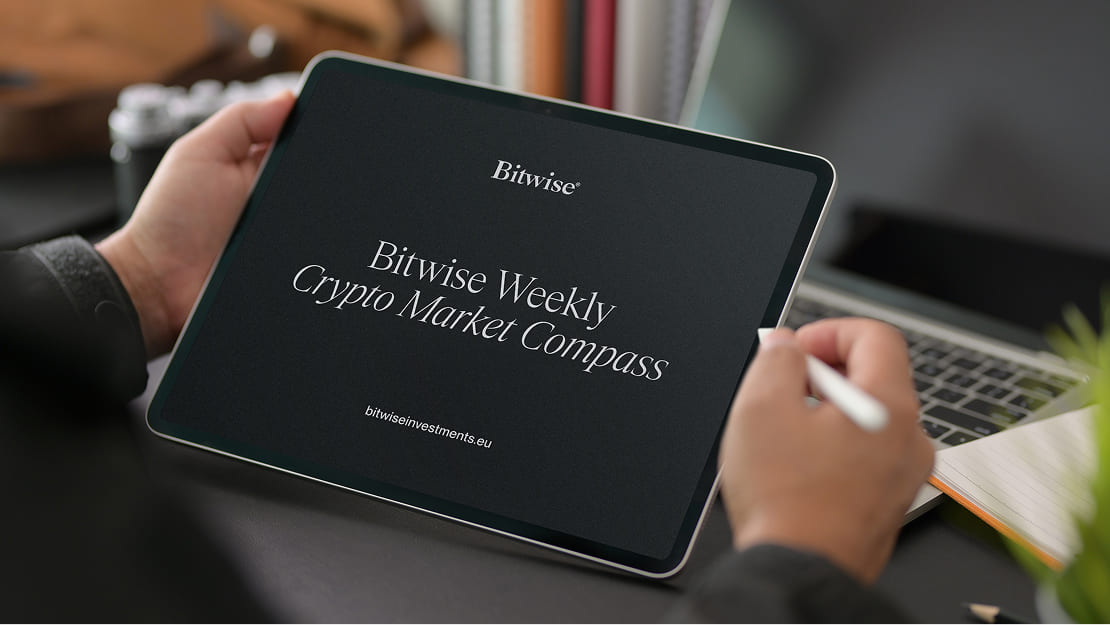- Last week, cryptoassets underperformed due to a broad-based risk-off environment in traditional financial markets. Lofty valuations in mega cap stocks like Nvidia as well as increasing credit risks in major IT names like Oracle led to some profit-taking which propagated to cryptoassets. However, the overall news flow has been improving significantly over the past couple of days.
- Our Cryptoasset Sentiment Index has turned slightly bullish again. It had previously exhibited a so-called bullish divergence which has signalled that market sentiment and positioning have been approaching max seller exhaustion, i.e. a state where there are no sellers left anymore.
- Chart of the Week: bitcoin on-chain indicators have flashed contrarian signals. For instance, short-term bitcoin holders realized the highest number of losses since the April tariff sell-off – a sign of broad-based capitulation among rather unsophisticated investors. These spikes in realized losses among short-term bitcoin holders tend to occur near tactical bottoms.
Chart of the Week
Bitcoin Short-term Holder (STH) Realized Lost
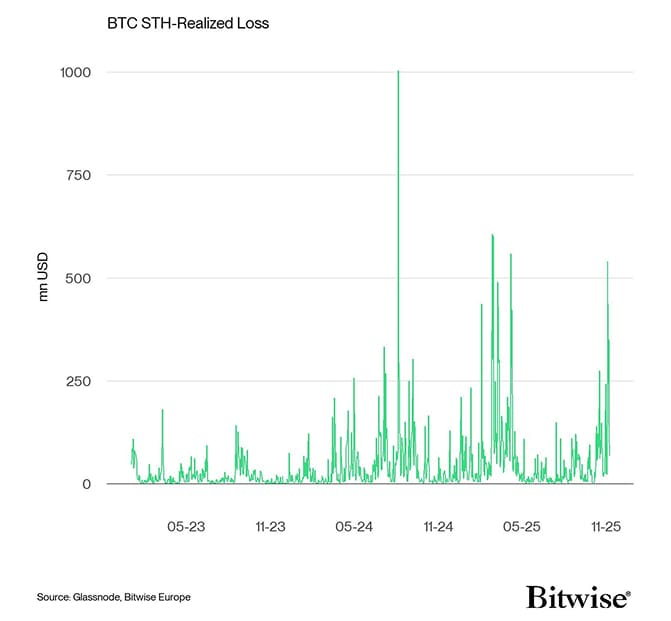
Performance
Last week, cryptoassets underperformed again due to a broad-based risk-off environment in traditional financial markets. Lofty valuations in mega cap stocks like Nvidia as well as increasing credit risks in major IT names like Oracle led to some profit-taking which propagated to cryptoassets.
This sell-off appeared to be related to the previous increase in funding stress and the decline in Fed liquidity which had temporarily led to a spike in SOFR-Fed Funds Rate spreads. It could also be related to the fact that alternative job market data have shown that the US economy likely shed jobs in October while the government shutdown persists.
On the bright side, this latest sell-off has already led to a significant degree of bearishness in both crypto markets and US equities – both fear and greed indices, the Crypto Fear & Greed Index as well as the Fear & Greed Index for US equities published by CNN, reached “extreme fear” levels last week in a sign of broad-based capitulation across risk assets. These extreme sentiment readings are generally a good contrarian indicator.
In addition, bitcoin on-chain indicators have flashed contrarian signals as well. For instance, short-term bitcoin holders realized the highest number of losses since the April tariff sell-off – a sign of broad-based capitulation among rather unsophisticated investors (Chart-of-the-Week).
These spikes in realized losses among short-term bitcoin holders tend to occur near tactical bottoms.
Meanwhile, our inhouse Cryptoasset Sentiment Index had previously exhibited a so-called bullish divergence which has signalled that market sentiment and positioning have been approaching max seller exhaustion, i.e. a state where there are no sellers left anymore.
The overall news flow has also been improving.
For instance, over the weekend, US senators have reached an agreement to end the government shutdown. Although the US congress still needs to approve, Polymarket odds already signal that the shutdown could end this week already.
This has many positive implications for risk assets and cryptoassets in particular.
Firstly, the funding stress in the US banking system has been exacerbated by the shutdown as the US government has been building up its Treasury General Account (TGA) at the Fed which tends to drain liquidity from the banking system. A reopening of the government should reverse this and ease liquidity stress in the banking system as the government should resume spending again.
Secondly, the government reopening will likely entail a flurry of lagging economic data releases that could affect Fed monetary policy (positively). Due to the shutdown, the BLS and other US government agencies have not published labour market and inflation statistics such as the highly-anticipated non-farm payrolls release.
However, as mentioned above, alternative job market data have shown that the US economy likely shed -9.1k jobs in October while the government shutdown persists. Other leading labour market indicators such as Challenger job cut announcements are also suggesting an increase in unemployment. The University of Michigan Consumer Sentiment has also plummeted to near-record lows in November suggesting broad-based consumer angst especially with respect to labour market prospects.
All of these indicators suggest that Fed monetary policy should continue to ease and that the likelihood of renewed Quantitative Easing (“QE”) is increasing.
In fact, Fed of NY President John Williams just recently said that the Fed could return to expanding its securities holdings soon. This would be a very positive tailwind for bitcoin and cryptoassets.
Lastly, Donald Trump has announced on Truth Social that the US government will pay out $2,000 per person to low-income Americans as “tariff dividend”. This type of “helicopter money” could be highly supportive for scarce cryptoassets like bitcoin.
All in all, the combination of extreme bearishness and increasingly positive news flow has created a very attractive risk-reward set-up for bitcoin and cryptoassets.
Cross Asset Performance (Week-to-Date)
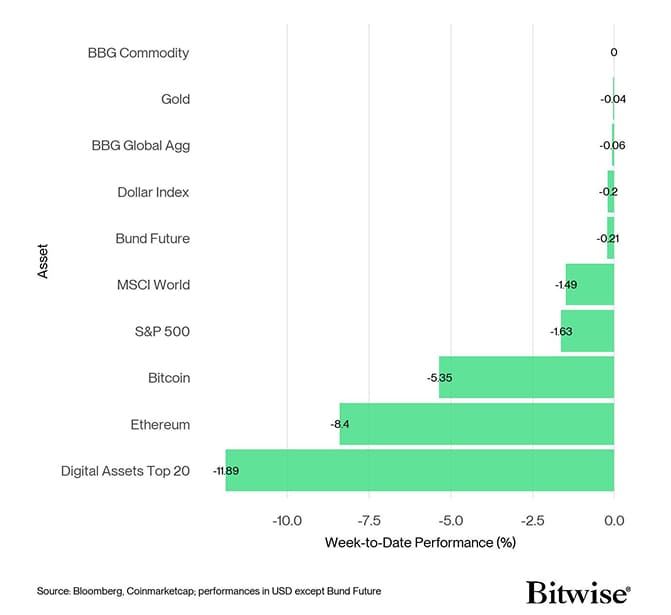 Source: Bloomberg, Coinmarketcap; performances in USD exept Bund Future
Top 10 Cryptoasset Performance (Week-to-Date)
Source: Bloomberg, Coinmarketcap; performances in USD exept Bund Future
Top 10 Cryptoasset Performance (Week-to-Date)
 Source: Coinmarketcap
Source: Coinmarketcap
In general, among the top 10 crypto assets Hyperliquid, TRON, and Dogecoin were the relative outperformers.
Overall, altcoin outperformance vis-à-vis bitcoin has picked up over the last week, with 75% of our tracked altcoins managing to outperform bitcoin on a weekly basis. However, Ethereum continued to underperform bitcoin last week.
Sentiment
Our in-house “Cryptoasset Sentiment Index” continued to exhibit very bearish sentiment until Sunday, when it flipped back positive.
At the moment, 8 out of 15 indicators are above their short-term trend.
Last week, Bitcoin Exchange inflows, Altseason Index, BTC Futures Long Liquidation Dominance, Crypto Dispersion, Crypto Hedge Fund beta, STH SOPR, Funding Rate and 1M 25delta skew metrics showed positive momentum.
The Crypto Fear & Greed Index currently signals a “Fear” level of sentiment as of this morning. It had hit “Extreme Fear” levels briefly again last week.
Performance dispersion among cryptoassets has trended up slightly last week, signalling that altcoin's performance dispersion has increased relative to bitcoin, this is a metric to keep an eye on.
Altcoin outperformance vis-à-vis Bitcoin has increased from last week, with around 75% of our tracked altcoins managing to outperform Bitcoin on a weekly basis. Ethereum also underperformed Bitcoin last week.
In general, increasing (decreasing) altcoin outperformance tends to be a sign of increasing (decreasing) risk appetite within cryptoasset markets and the latest altcoin outperformance signals an increasing risk appetite at the moment.
Sentiment in traditional financial markets as measured by our in-house measure of Cross Asset Risk Appetite (CARA) has also decreased, moving from 0.44 to 0.28. This is a notable divergence between tradfi and crypto asset sentiment that should be watched closely.
Fund Flows
Weekly fund flows into global crypto ETPs decelerated across the majors last week with net outflows across Bitcoin and Ethereum products, yet inflows into ex-Ethereum products, mainly SOL US ETFs, still suggest steady allocation in the altcoin landscape. This coincides with a slight rise in performance dispersion, indicating that correlations remain high, but divergences are beginning to widen.
Global crypto ETPs saw around -1486.5 mn USD in weekly net outflows across all types of cryptoassets, after +1699.6 mn USD in net inflows the previous week.
Global Bitcoin ETPs have continued to experience net outflows totalling -1170.7 mn USD last week, of which -1219.7 mn USD in net outflows were related to US spot Bitcoin ETFs.
The Bitwise Bitcoin ETF (BITB) in the US experienced net inflows, totalling +4.7 mn USD last week.
In Europe, the Bitwise Physical Bitcoin ETP (BTCE) experienced net outflows equivalent to -3.7 mn USD, while the Bitwise Core Bitcoin ETP (BTC1) experienced minor net inflows of +1.4 mn USD.
The Grayscale Bitcoin Trust (GBTC) has posted net outflows of -64.3 mn USD. The iShares Bitcoin Trust (IBIT), however, experienced net outflows of around -581 mn USD last week.
Meanwhile, flows into global Ethereum ETPs decreased last week, with around -471.2 mn USD in net outflows.
US spot Ethereum ETFs, also recorded net outflows of around -507.8 mn USD on aggregate. The Grayscale Ethereum Trust (ETHE), has posted net outflows of -38.3 mn USD.
The Bitwise Ethereum ETF (ETHW) in the US has also posted net outflows of -3.1 mn USD.
In Europe, the Bitwise Physical Ethereum ETP (ZETH) saw net outflows of -0.1 mn USD while the Bitwise Ethereum Staking ETP (ET32) saw minor net inflows of +0.1 mn USD.
Altcoin ETPs ex Ethereum also experienced net inflows of +115.3 mn USD last week. This is largely from US SOL ETFs which have not had a single day of net outflows since the launch. Last week US SOL ETFs saw net inflows of +136.6 mn USD, of which Bitwise's Solana ETF (BSOL) experienced net inflows of +126.8 mn USD.
Thematic & basket crypto ETPs, however, posted net inflows of +40 mn USD on aggregate last week. The Bitwise MSCI Digital Assets Select 20 ETP (DA20) has experienced zero flows (+/- 0 mn USD) on aggregate.
Global crypto hedge funds exposure to Bitcoin has decreased slightly last week. The 20-days rolling beta of global crypto hedge funds' performance to Bitcoin decreased to around 0.7 per yesterday's close, down from 0.73 from the week before.
On-Chain Data
Sell-side pressure across exchanges remains persistent, with intraday spot buying minus selling closing the week at approximately –$477mn. Furthermore, on-chain profit taking remains elevated at around +$1.01bn per day, suggesting an uptick in sell-side pressure as investors continue to de-risk into market weakness.
Notably, Short-Term Holders have shown signs of capitulation, realising net losses of approximately -$231mn per day. The scale of these realised losses is comparable to those observed during the yen-carry unwind (-$219 million) and the tariff tantrum (-$257 million) events, both of which historically coincided with market inflection points and subsequent recoveries.
Additionally, percentage of supply held in profit has declined to its long-term mean, with around 74% of coins remaining in a profitable state. Again, this pattern mirrors conditions seen during previous stress events, such as the yen-carry unwind and the tariff tantrum, where defending this long-term mean proved critical for preserving overall market structure.
Furthermore, we can utilise the AVIV Ratio, which measures investor sentiment through the lens of the average paper profit or loss held by active market participants. This provides a useful gauge of the financial stress currently experienced by the typical investor. Throughout the recent downtrend, aggregate paper gains have retraced toward their long-term mean of approximately 20% profit, signalling a broad reset in investor sentiment.
Despite the recent relief bounce to $104k, the market remains below both the 200-day moving average at $108k and the Short-Term Holder cost basis at $113k, suggesting pressure remains on recent buyers. Reclaiming these levels would be essential to restore constructive momentum and signal renewed market strength. In addition, the $100k level remains critical to defend, with a substantial number of investors moving into a position of loss below this level.
Positively, the Accumulation Trend Score, which tracks changes in supply held across wallets of all sizes, indicates that large-scale accumulation is underway, reflecting the presence of a robust buy-side and growing investor confidence despite recent market volatility.
All in all, on-chain conditions suggest that the market resides at a critical inflection point, with many key metrics, such as the percent supply in profit, and the AVIV ratio resetting to their long-term mean.
Sell-side pressure across exchanges remains persistent, with spot flows closing the week at –$477mn, while on-chain profit taking of around +$1.01bn per day suggests investors continue to de-risk into market weakness. However, the Accumulation Trend Score remains robust week over week, indicating that buy-side demand is absorbing a portion of this pressure. Most importantly, reclaiming the 200-day moving average at $108k and the Short-Term Holder cost basis at $113k would be critical for restoring constructive momentum, while defending the $100k level remains essential for protecting overall market structure.
Futures, Options & Perpetuals
Over the past week, BTC perpetual futures open interest increased by 14.5k BTC across all exchanges, whilst open interest across CME futures contracts increased by 16.0k BTC, signalling an uptick in institutional participation. However, total open interest remains well below levels observed in prior months, suggesting that traders continue to exercise caution following the recent market deleveraging.
BTC perpetual funding rates remain positive but contained, indicating a cautiously optimistic market stance rather than signs of speculative excess.
In general, when the funding rate is positive (negative), long (short) positions periodically pay short (long) positions, which is indicative of bullish (bearish) sentiment.
The BTC 3-months annualised basis continues to decline to 4.8% p.a., averaged across various futures exchanges.
BTC options open interest has risen by approximately 44.2k BTC, while the put to call open interest ratio has declined to 0.61. This suggests that although demand for downside protection remains elevated, it is beginning to moderate as market participants show early signs of renewed risk appetite.
Additionally, the 25-delta skew across major BTC option tenors has seen a notable uptick over the past week but is now beginning to moderate, indicating that while hedging appetite remains present, the cost of downside protection is starting to ease.
Bottom Line
- Last week, cryptoassets underperformed due to a broad-based risk-off environment in traditional financial markets. Lofty valuations in mega cap stocks like Nvidia as well as increasing credit risks in major IT names like Oracle led to some profit-taking which propagated to cryptoassets. However, the overall news flow has been improving significantly over the past couple of days.
- Our Cryptoasset Sentiment Index has turned slightly bullish again. It had previously exhibited a so-called bullish divergence which has signalled that market sentiment and positioning have been approaching max seller exhaustion, i.e. a state where there are no sellers left anymore.
- Chart of the Week: bitcoin on-chain indicators have flashed contrarian signals. For instance, short-term bitcoin holders realized the highest number of losses since the April tariff sell-off – a sign of broad-based capitulation among rather unsophisticated investors. These spikes in realized losses among short-term bitcoin holders tend to occur near tactical bottoms.
Appendix
Bitcoin Price vs Cryptoasset Sentiment Index
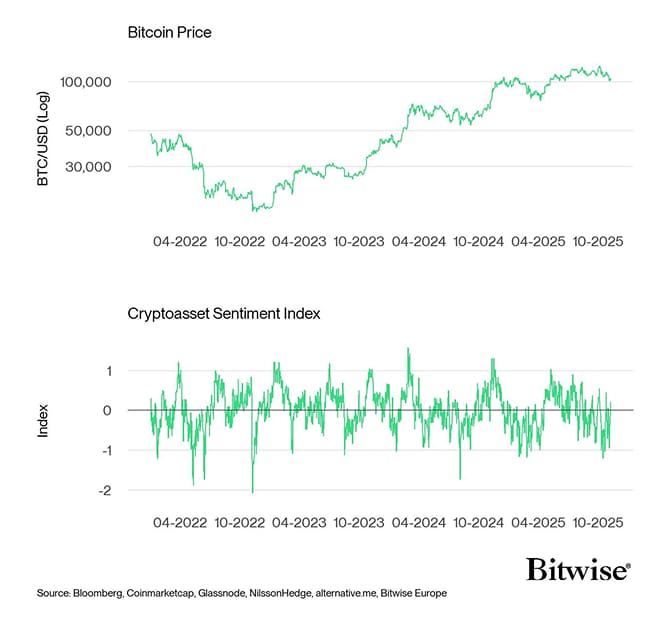 Source: Bloomberg, Coinmarketcap, Glassnode, NilssonHedge, alternative.me, Bitwise Europe
Cryptoasset Sentiment Index
Source: Bloomberg, Coinmarketcap, Glassnode, NilssonHedge, alternative.me, Bitwise Europe
Cryptoasset Sentiment Index
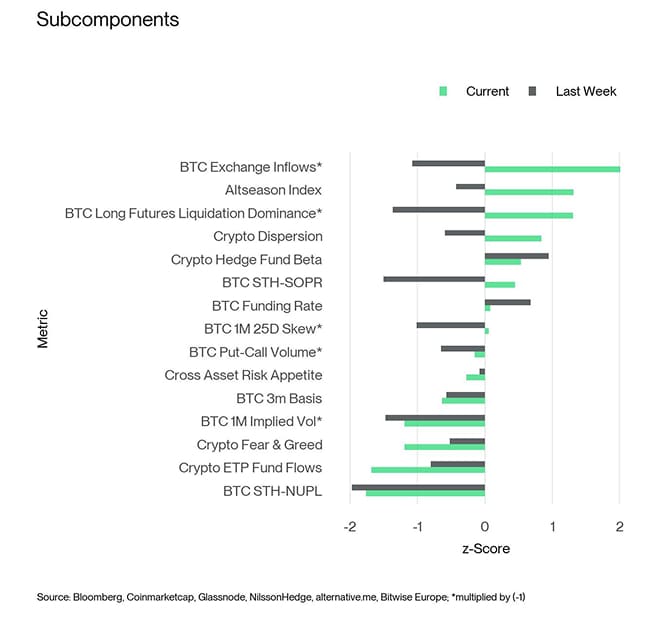 Source: Bloomberg, Coinmarketcap, Glassnode, NilssonHedge, alternative.me, Bitwise Europe; *multiplied by (-1)
Cryptoasset Sentiment Index
Source: Bloomberg, Coinmarketcap, Glassnode, NilssonHedge, alternative.me, Bitwise Europe; *multiplied by (-1)
Cryptoasset Sentiment Index
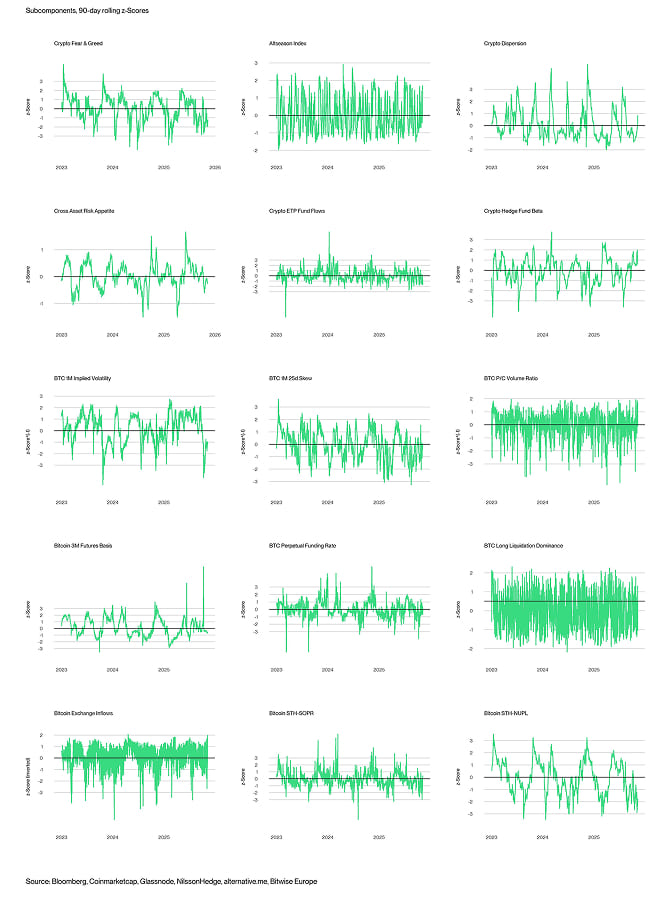 Source: Bloomberg, Coinmarketcap, Glassnode, NilssonHedge, alternative.me, Bitwise Europe
TradFi Sentiment Indicators
Source: Bloomberg, Coinmarketcap, Glassnode, NilssonHedge, alternative.me, Bitwise Europe
TradFi Sentiment Indicators
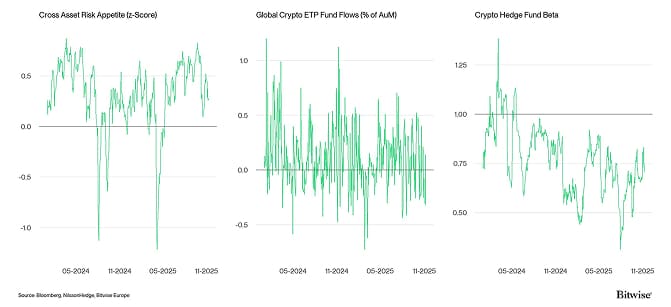 Source: Bloomberg, NilssonHedge, Bitwise Europe
Crypto Sentiment Indicators
Source: Bloomberg, NilssonHedge, Bitwise Europe
Crypto Sentiment Indicators
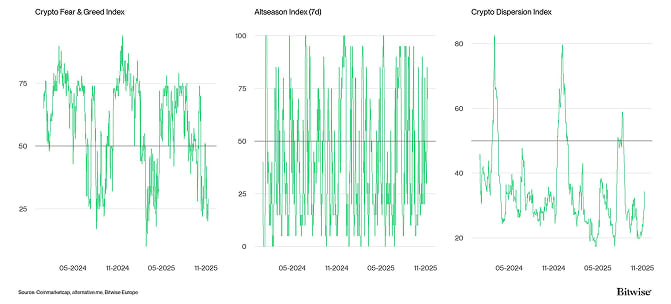 Source: Coinmarketcap, alternative.me, Bitwise Europe
Crypto Options' Sentiment Indicators
Source: Coinmarketcap, alternative.me, Bitwise Europe
Crypto Options' Sentiment Indicators
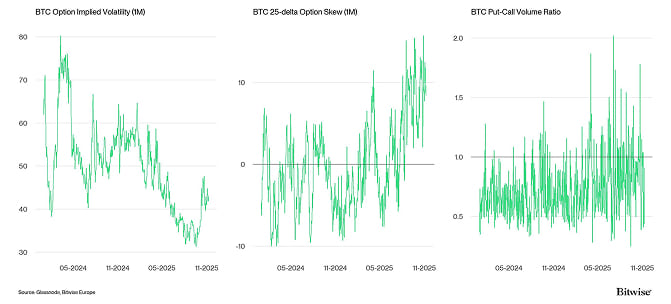 Source: Glassnode, Bitwise Europe
Crypto Futures & Perpetuals' Sentiment Indicators
Source: Glassnode, Bitwise Europe
Crypto Futures & Perpetuals' Sentiment Indicators
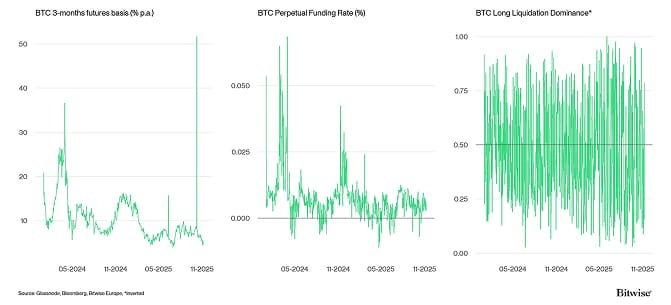 Source: Glassnode, Bitwise Europe; *Inverted
Crypto On-Chain Indicators
Source: Glassnode, Bitwise Europe; *Inverted
Crypto On-Chain Indicators
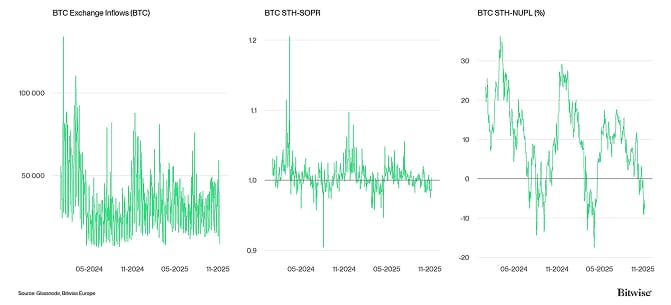 Source: Glassnode, Bitwise Europe
Bitcoin vs Crypto Fear & Greed Index
Source: Glassnode, Bitwise Europe
Bitcoin vs Crypto Fear & Greed Index
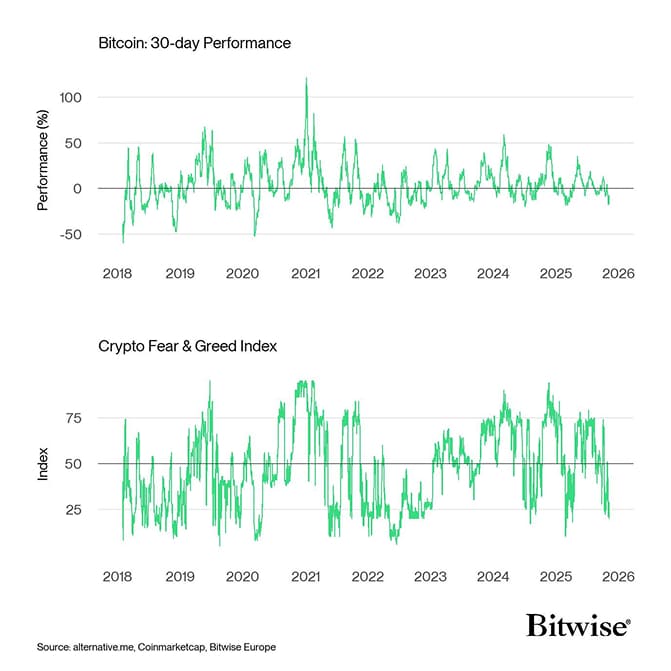 Source: alternative.me, Coinmarketcap, Bitwise Europe
Cryptoasset Sentiment Index: Daily vs Hourly
Source: alternative.me, Coinmarketcap, Bitwise Europe
Cryptoasset Sentiment Index: Daily vs Hourly
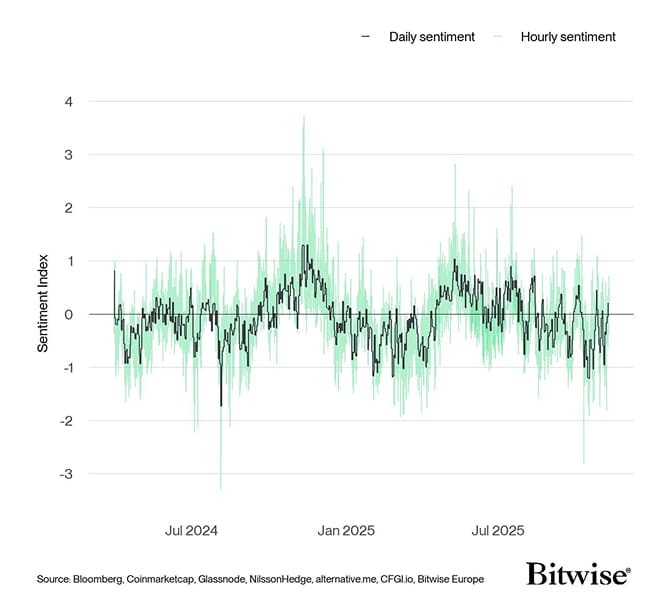 Source: Bloomberg, Coinmarketcap, Glassnode, NilssonHedge, alternative.me, CFGI.io, Bitwise Europe
Bitcoin vs Global Crypto ETP Fund Flows
Source: Bloomberg, Coinmarketcap, Glassnode, NilssonHedge, alternative.me, CFGI.io, Bitwise Europe
Bitcoin vs Global Crypto ETP Fund Flows
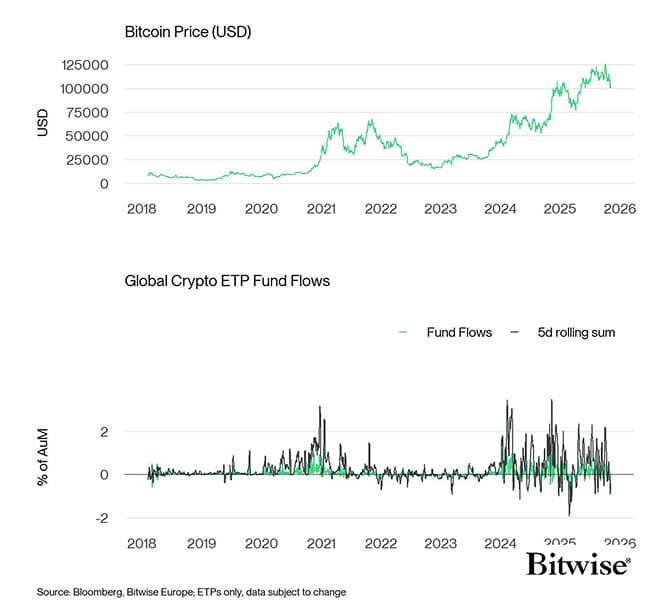 Source: Bloomberg, Bitwise Europe; ETPs only, data subject to change
Global Crypto ETP Fund Flows
Source: Bloomberg, Bitwise Europe; ETPs only, data subject to change
Global Crypto ETP Fund Flows
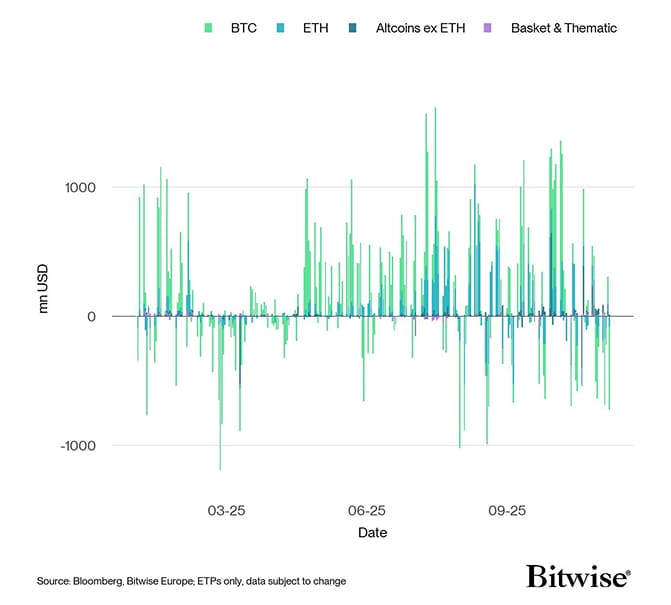 Source: Bloomberg, Bitwise Europe; ETPs only; data subject to change
US Spot Bitcoin ETF Fund Flows
Source: Bloomberg, Bitwise Europe; ETPs only; data subject to change
US Spot Bitcoin ETF Fund Flows
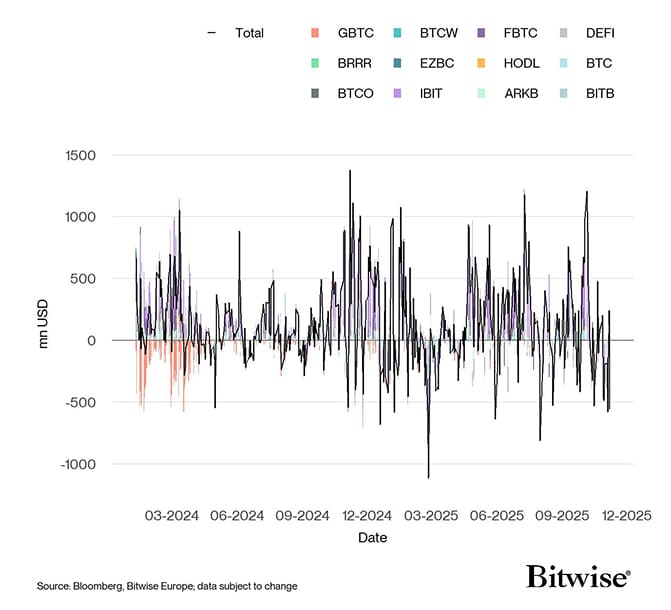 Source: Bloomberg, Bitwise Europe; data subject to change
US Spot Bitcoin ETFs: Flows since launch
Source: Bloomberg, Bitwise Europe; data subject to change
US Spot Bitcoin ETFs: Flows since launch
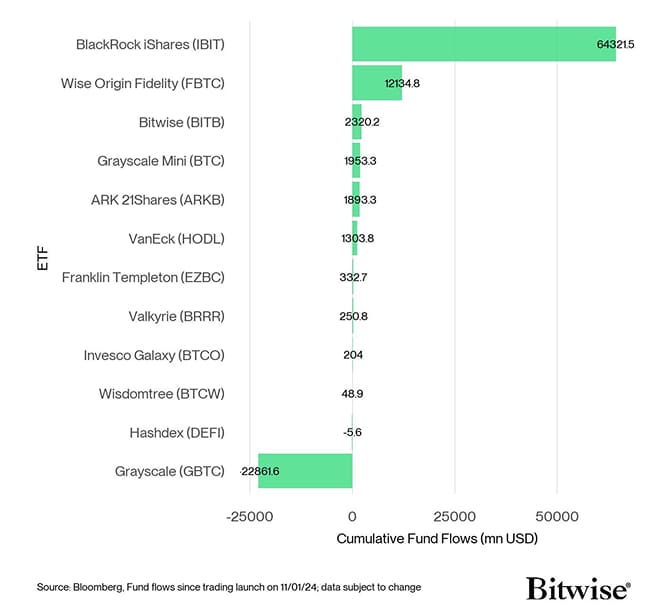 Source: Bloomberg, Fund flows since traiding launch on 11/01/24; data subject to change
US Spot Bitcoin ETFs: 5-days flow
Source: Bloomberg, Fund flows since traiding launch on 11/01/24; data subject to change
US Spot Bitcoin ETFs: 5-days flow
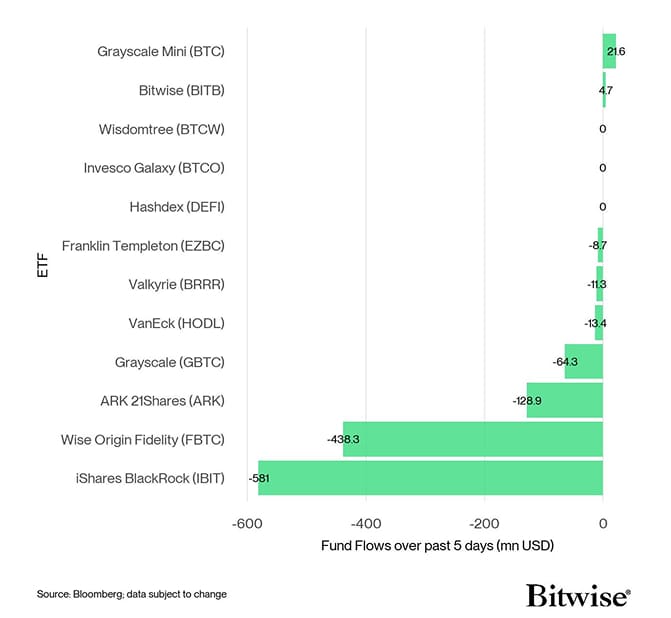 Source: Bloomber; data subject to change
US Bitcoin ETFs: Net Fund Flows since 11th Jan mn USD
Source: Bloomber; data subject to change
US Bitcoin ETFs: Net Fund Flows since 11th Jan mn USD
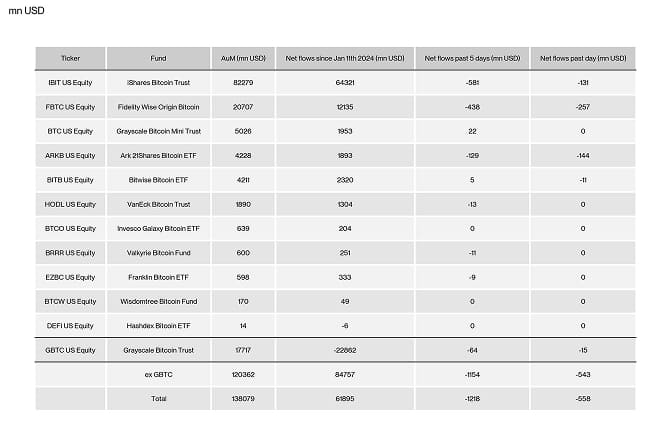 Source: Bloomberg, Bitwise Europe; data as of 07-11-2025
US Spot Ethereum ETF Fund Flows
Source: Bloomberg, Bitwise Europe; data as of 07-11-2025
US Spot Ethereum ETF Fund Flows
 Source: Bloomberg, Bitwise Europe; data subject to change
US Spot Ethereum ETFs: Flows since launch
Source: Bloomberg, Bitwise Europe; data subject to change
US Spot Ethereum ETFs: Flows since launch
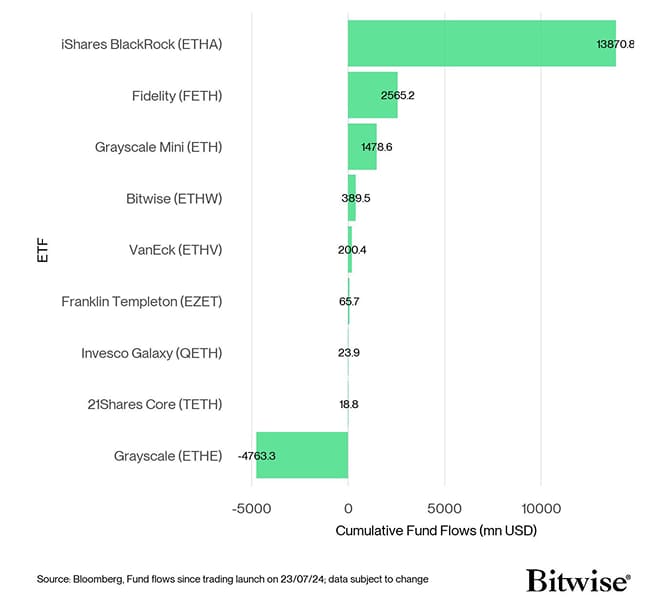 Source: Bloomberg, Fund flows since trading launch on 23/07/24; data subject on change
US Spot Ethereum ETFs: 5-days flow
Source: Bloomberg, Fund flows since trading launch on 23/07/24; data subject on change
US Spot Ethereum ETFs: 5-days flow
 Source: Bloomberg; data subject on change
US Ethereum ETFs: Net Fund Flows since 23rd July
Source: Bloomberg; data subject on change
US Ethereum ETFs: Net Fund Flows since 23rd July
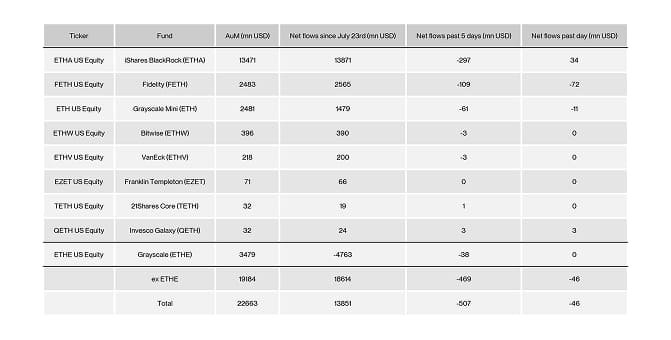 Source: Bloomberg, Bitwise Europe; data as of 07-11-2025
Bitcoin vs Crypto Hedge Fund Beta
Source: Bloomberg, Bitwise Europe; data as of 07-11-2025
Bitcoin vs Crypto Hedge Fund Beta
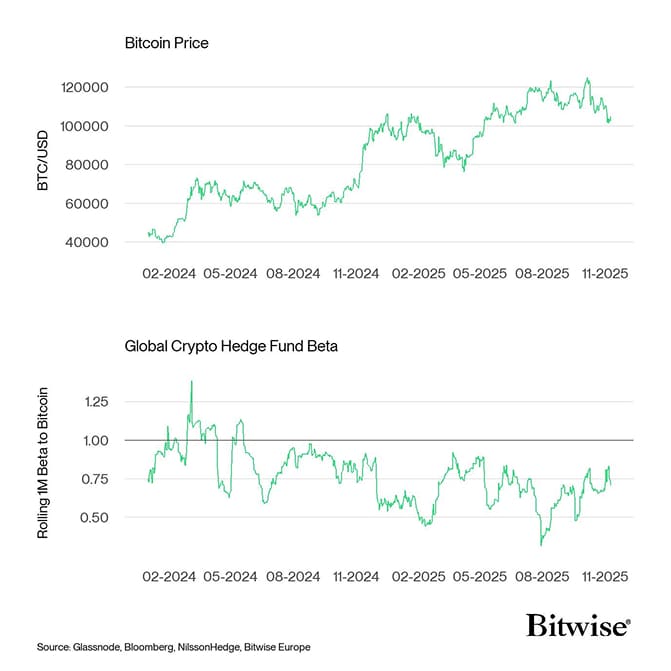 Source: Glassnode, Bloomberg, NilssonHedge, Bitwise Europe
Altseason Index
Source: Glassnode, Bloomberg, NilssonHedge, Bitwise Europe
Altseason Index
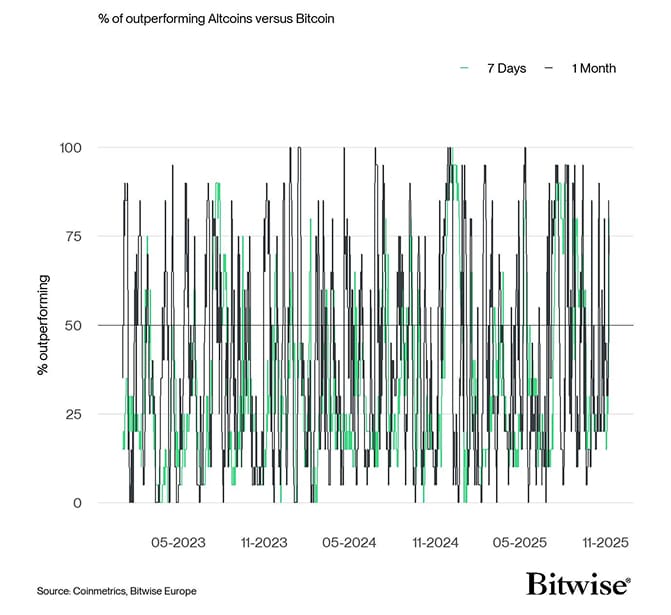 Source: Coinmetrics, Bitwise Europe
Bitcoin vs Crypto Dispersion Index
Source: Coinmetrics, Bitwise Europe
Bitcoin vs Crypto Dispersion Index
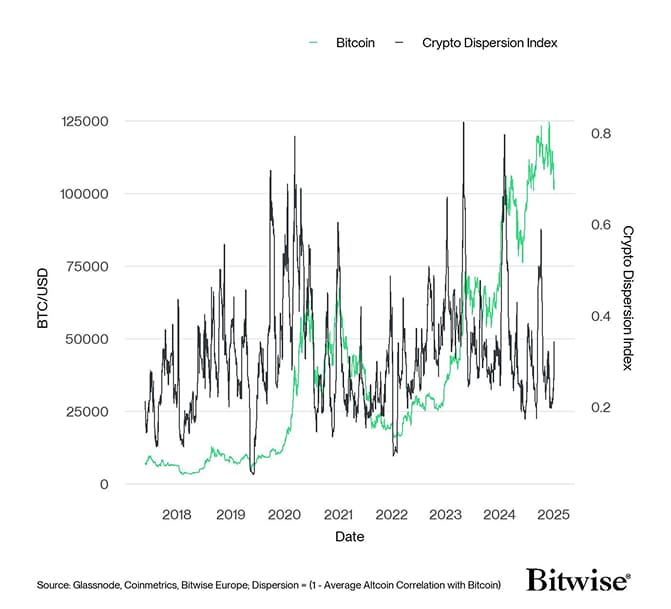 Source: Coinmarketcap, Bitwise Europe; Dispersion = (1 - Average Altcoin Correlation with Bitcoin)
Bitcoin Price vs Futures Basis Rate
Source: Coinmarketcap, Bitwise Europe; Dispersion = (1 - Average Altcoin Correlation with Bitcoin)
Bitcoin Price vs Futures Basis Rate
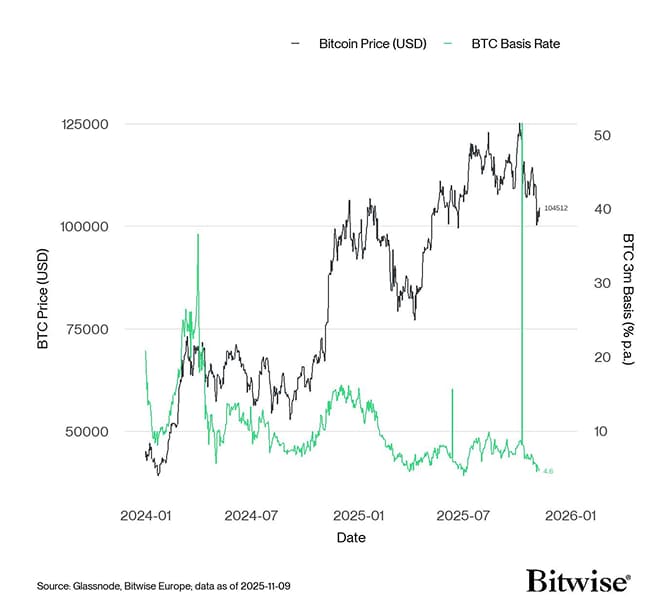 Source: Glassnode, Bitwise Europe; data as of 2025-11-09
Ethereum Price vs Futures Basis Rate
Source: Glassnode, Bitwise Europe; data as of 2025-11-09
Ethereum Price vs Futures Basis Rate
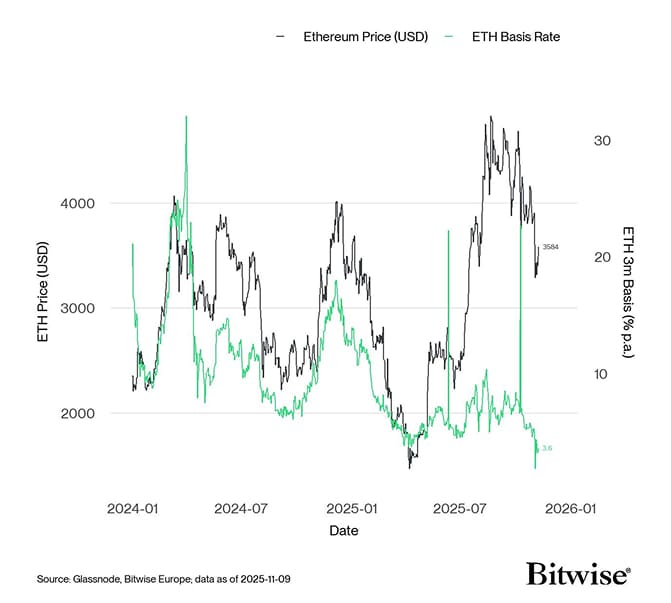 Source: Glassnode, Bitwise Europe; data as of 2025-11-09
BTC Net Exchange Volume by Size
Source: Glassnode, Bitwise Europe; data as of 2025-11-09
BTC Net Exchange Volume by Size
 Source: Glassnode, Bitwise Europe
Source: Glassnode, Bitwise Europe
Important information:
This article does not constitute investment advice, nor does it constitute an offer or solicitation to buy financial products. This article is for general informational purposes only, and there is no explicit or implicit assurance or guarantee regarding the fairness, accuracy, completeness, or correctness of this article or the opinions contained therein. It is advised not to rely on the fairness, accuracy, completeness, or correctness of this article or the opinions contained therein. Please note that this article is neither investment advice nor an offer or solicitation to acquire financial products or cryptocurrencies.
Before investing in crypto ETPs, potentional investors should consider the following:
Potential investors should seek independent advice and consider relevant information contained in the base prospectus and the final terms for the ETPs, especially the risk factors mentioned therein. The invested capital is at risk, and losses up to the amount invested are possible. The product is subject to inherent counterparty risk with respect to the issuer of the ETPs and may incur losses up to a total loss if the issuer fails to fulfill its contractual obligations. The legal structure of ETPs is equivalent to that of a debt security. ETPs are treated like other securities.
